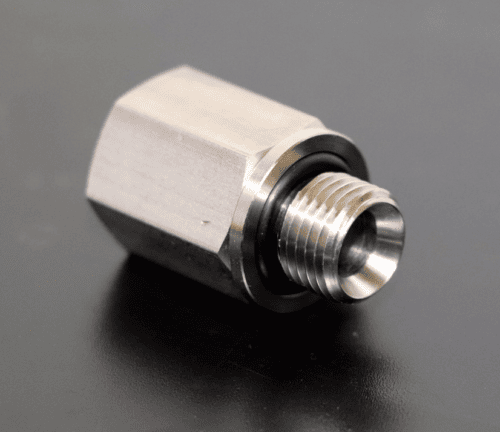 When it comes to threaded connections, various standards exist worldwide to ensure compatibility and interchangeability. In this blog post, we will explore two commonly used thread standards: British Standard Pipe Taper (BSPT) and British Standard Pipe Parallel (BSPP). Understanding the differences and characteristics of BSPT and BSPP threads is crucial for selecting the appropriate thread type for your applications.
When it comes to threaded connections, various standards exist worldwide to ensure compatibility and interchangeability. In this blog post, we will explore two commonly used thread standards: British Standard Pipe Taper (BSPT) and British Standard Pipe Parallel (BSPP). Understanding the differences and characteristics of BSPT and BSPP threads is crucial for selecting the appropriate thread type for your applications.
Lets delve into the applications, advantages and characteristics of BSPT and BSPP threads.
- BSPT (British Standard Pipe Taper) Threads: BSPT threads feature a tapered design, where the thread diameter gradually decreases along the length of the thread. This taper helps create a tight and leak-resistant seal when tightened with a compatible mating fitting. BSPT threads follow a 55-degree included angle and are widely used in applications involving fluid and gas connections, such as plumbing, hydraulics, and pneumatic systems. It is important to note that BSPT threads are not interchangeable with BSPP threads due to their different sealing mechanisms.
- BSPP (British Standard Pipe Parallel) Threads: BSPP threads, also known as G threads, have a parallel design, where the thread diameter remains constant along the length of the thread. Unlike BSPT threads, BSPP threads do not feature a taper and rely on an additional sealing mechanism, such as an O-ring or gasket, to create a reliable seal. BSPP threads follow a 55-degree included angle and are commonly used in applications that require a reliable seal, such as fuel lines, air compressors, and industrial equipment.
- Differences and Compatibility: The key difference between BSPT and BSPP threads lies in their sealing mechanisms. BSPT threads rely on the tapered design to create a seal, while BSPP threads require an additional sealing element. Due to this difference, it is important to ensure the correct matching of threads and fittings to maintain a leak-free connection. Attempting to interchange BSPT and BSPP threads can lead to sealing issues and potential leaks.
- Advantages and Considerations:
a. BSPT Thread Advantages: BSPT threads provide a self-sealing mechanism, eliminating the need for additional sealing elements. The tapered design allows for a tight and reliable connection, particularly in applications involving fluid and gas systems.
b. BSPP Thread Advantages: BSPP threads offer versatility and compatibility with a wide range of sealing options. The parallel design allows for easier installation and maintenance, and the additional sealing element provides enhanced sealing capabilities. - Selection and Application Considerations: When selecting between BSPT and BSPP threads, consider the specific requirements of your application. Factors such as the nature of the fluid or gas being transported, operating pressures, temperature ranges, and compatibility with existing systems should be taken into account. Consulting industry standards and guidelines can help ensure the correct thread type is chosen for optimal performance and safety.
Understanding the differences between BSPT and BSPP threads is essential for selecting the appropriate thread type for your applications. While BSPT threads provide a self-sealing mechanism through their tapered design, BSPP threads require an additional sealing element for reliable sealing. By considering the nature of your application, operating conditions, and compatibility requirements, you can make informed decisions when choosing between BSPT and BSPP threads. Remember, accuracy and compatibility are crucial in threaded connections to ensure reliable and leak-free systems.
